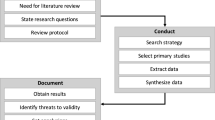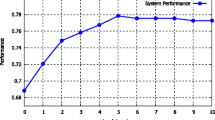Abstract
This paper examines the use of figurative language in expressing emotions in social media. Based on the analysis of 300 posts from Weibo.com, we argue that there is a close interaction between figurative language and emotion. It is found that 27% of the posts contain figurative devices such as metaphor, simile, rhetorical questions, and irony. Among the five basic emotions, the emotion of anger has the greatest tendency to be expressed via the figurative devices, followed by sadness, fear, surprise, and happiness. In addition, the data shows that rhetorical questions are the most frequently used figurative device for evoking negative emotions, i.e. anger and sadness. We believe that the linguistic account of figurative language in emotion expressions will significantly enhance the effectiveness of the existing automatic emotion classification systems.
Access this chapter
Tax calculation will be finalised at checkout
Purchases are for personal use only
Preview
Unable to display preview. Download preview PDF.
Similar content being viewed by others
References
Ahluwalia, R., Burnkrant, R. E.: Answering questions about questions: A persuasion knowledge perspective for understanding the effects of rhetorical questions. Journal of Consumer Research. 31, 26-42 (2004).
Alleton, V.: The so-called “rhetorical interrogation” in Mandarin. Journal of Chinese Linguistics. 16, 278-297 (1988).
Burnkrant, R. E., Howard, D. J.: Effects of the use of introductory rhetorical questions versus statements on information processing. Journal of Personality and Social Psychology. 47, 1218-1230 (1984).
Citron, F. M., Cacciari, C., Kucharski, M., Beck, L., Conrad, M., Jacobs, A. M.: When emotions are expressed figuratively: Psycholinguistic and Affective Norms of 619 Idioms for German (PANIG). Behavior Research Methods. 48, 91-111 (2016).
Colston, H. L.: “I’ve never Seen anything like it”: Overstatement, understatement, and irony. Metaphor and Symbolic Activity. 12, 43-58 (1997).
Dews, S., Winner, E.: Muting the meaning: A social function of irony. Metaphor and Symbolic Activity. 10, 3-19 (1995).
Ekman, P. E., Davidson, R. J.: The nature of emotion: Fundamental questions. Oxford University Press (1994).
Fainsilber, L., Ortony, A.: Metaphorical uses of language in the expression of emotions. Metaphor and Symbol. 2, 239-250 (1987).
Frank, J.: You call that a rhetorical question?: Forms and functions of rhetorical questions in conversation. Journal of Pragmatics. 14, 723-738 (1990).
Foolen, A.: The relevance of emotion for language and linguistics. In Foolen, A., Ludtke, U. M., Racine, T. P., Zlatev, J. (eds), Moving Ourselves, Moving Others: Motion and Emotion in Intersubjectivity, Consciousness and Language, pp. 349-369 (2012).
Fussell, S. R.: The Use of metaphor in written descriptions of emotional states. Unpublished manuscript, Carnegie Mellon University (1992).
Fussell, S. R., Moss, M. M.: Figurative language in emotional communication. In Fussell, S. R., Kreuz, R. J. (eds) Social and Cognitive Approaches to Interpersonal Communication, pp. 113-141 (1998).
Gibbs, R. W., Leggitt, J. S., Turner, E. A.: What’s special about figurative language in emotional communication. In Fussell, S. R. (ed.), The Verbal Communication of Emotions: Interdisciplinary Perspectives, pp. 125-149. Mahwah, New Jersey: Lawrence Erlbaum Associates (2002).
Howard, D. J.: Rhetorical question effects on message processing and persuasion: The role of information availability and the elicitation of judgment. Journal of Experimental Social Psychology. 26, 217-239. (1990).
Jing-Schmidt, Z.: The manifestation of emotion: on the Mandarin Chinese NanDao. Journal of Chinese Linguistics. 36. 211-234. (2008).
Kövecses, Z.: Emotion Concepts. New York: Springer-Verlag (1990).
Kövecses, Z.: Metaphor and Emotion: Language, Culture, and Body in Human Feeling. Cambridge University Press (2003).
Lakoff, G., Johnson, M.: Metaphors we live by. Chicago: University of Chicago Press (1980).
Lakoff, G., Kovecses, Z.: The cognitive model of anger inherent in American English. In Holland, D., Quinn, N. (eds), Cultural Models in Language and Thought, pp. 195-221. Cambridge: Cambridge University Press (1987).
Lee, S.Y.M., Chen, Y., Huang, C.-R., Li, S.: Detecting emotion causes with a linguistic rule-based approach. computational intelligence. Special Issues on Computational Approaches to Analysis of Emotion in Text. Wiley-Blackwell (2013).
Lee, S.Y.M., Wang, Z.: Emotions in code-switching texts: Corpus analysis and construction. In Proceedings of SIGHAN Workshop, the 53rd Meeting of Association for Computational Linguistics (ACL 2015) (2015).
Leggitt, J. S., Gibbs, R. W.: Emotional reactions to verbal irony. Discourse Processes. 29, 1-24 (2000).
Petty, R. E., Cacioppo, J. T., Heesacker, M.: Effects of rhetorical questions on persuasion: A cognitive response analysis. Journal of Personality and Social Psychology. 40, 432-440. (1981).
Qadir, A.: Acquiring Knowledge for Affective State Recognition in Social Media. Doctoral dissertation, The University of Utah (2016).
Reyes, A., Rosso, P., Buscaldi, D.: From humor recognition to irony detection: The figurative language of social media. Data and Knowledge Engineering. 74, 1-12. (2012).
Roberts, R. M., Kreuz, R. J.: Why do people use figurative language? Psychological Science. 5, 159-163 (1994).
Swasy, J. L., Munch, J. M.: Examining the target of receiver elaborations: Rhetorical question effects on source processing and persuasion. Journal of Consumer Research. 11, 877-886. (1985).
Williams-Whitney, D., Mio, J. S., Whitney, P.: Metaphor production in creative writing. Journal of Psycholinguistic Research, 21, 497-509 (1992).
Yu, N.: Metaphorical expressions of anger and happiness in English and Chinese. Metaphor and Symbol. 10, 59-92. (1995).
Author information
Authors and Affiliations
Corresponding author
Editor information
Editors and Affiliations
Rights and permissions
Copyright information
© 2018 Springer International Publishing AG
About this paper
Cite this paper
Lee, S.Y.M. (2018). Figurative Language in Emotion Expressions. In: Wu, Y., Hong, JF., Su, Q. (eds) Chinese Lexical Semantics. CLSW 2017. Lecture Notes in Computer Science(), vol 10709. Springer, Cham. https://doi.org/10.1007/978-3-319-73573-3_37
Download citation
DOI: https://doi.org/10.1007/978-3-319-73573-3_37
Published:
Publisher Name: Springer, Cham
Print ISBN: 978-3-319-73572-6
Online ISBN: 978-3-319-73573-3
eBook Packages: Computer ScienceComputer Science (R0)




